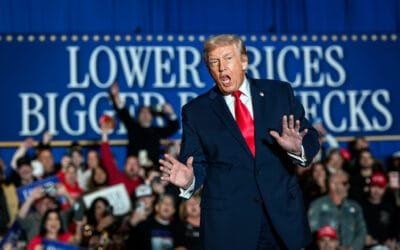Ironically, tax haven nations and territories achieve precisely the goals first set out by the OECD in the early 1960s. Here’s how the OECD described (as it still, hypocritically, describes) its initial goals:
To achieve the highest sustainable economic growth and employment and a rising standard of living of members countries, while maintaining financial stability and thus to contribute to the development of the world economy . . . to contribute to the expansion of world trade on a multilateral, non-discriminatory basis.16 (emphasis added)
In addition, in its 1998 report the OECD said it “believes the progressive liberalization of cross-border trade an investment has been the single, most powerful driving force behind economic growth and rising living standards.” That’s true. Why, then doesn’t the OECD applaud the tax-haven countries and others that are so effectively permitting the expansion of economic output, employment, world trade and living standards? It should be learning from these more-capitalist nations and emulating their policies. Instead, it’s condemning them, pressuring them to adopt welfare-state (and wealth-crushing) policies — and threatening to shut them down if they don’t comply.
The OECD was founded in 1960 to lower trade barriers and coordinate international policies so as to maximize wealth-creation. That was before its members grew into gargantuan welfare states. In recent decades, in order to preserve and expand those welfare states, the OECD has pursued an opposite course, trying to repel the low-tax, low-regulation and free-trade policies of nations that attract talent and capital.
Tax havens are encouraging and welcoming foreign investment — yet are being painted as scams established to deprive high-tax countries of revenues. This is ridiculous — since a zero tax brings in no revenues. And if, as the critics further claim, havens merely attract “shell entities” that undertake no “substantial activities” (i.e., with no local employees or operations, no use of office space or services and no imports of goods and services that are otherwise subject to tariffs) — then there isn’t even an indirect tax-revenue benefit to the tax haven governments. On the other hand, if such activities do take place, even to some degree (and they do), resulting in indirect tax revenues for local jurisdictions, then these are not, in fact, “sham” set-ups. The tax haven critics cannot have it both ways — but that certainly doesn’t stop them from trying.
It’s a rarely mentioned fact, but capital held in tax havens does not, by any means, lie fallow. It is usually re-invested in the stocks and bonds of U.S.-based companies and others around the world. Since this capital is left free or only lightly taxed, there’s far more of it in the world than there would be otherwise. But even if the capital accumulated in tax havens was not re-invested abroad, due to hostile investment climates — if instead it stayed there and business operations were built up locally, within tax havens (as has occurred on other tiny islands, like Hong Kong, in past decades) — it would still be a boon to wealth-holders and living standards. At least the wealth wouldn’t be extinguished — as it always is whenever governments tax it and consume it.
References:
16 Formed in December 1960 and based in Paris, the OECD currently has 29 members (including the U.S.), mostly from the developed world. Although it has no direct statutory power, the OECD influences global tax and regulatory policy through policy positions and the maintenance of an effective cartel of finance ministers. It maintains a web-site at www.oecd.org.









